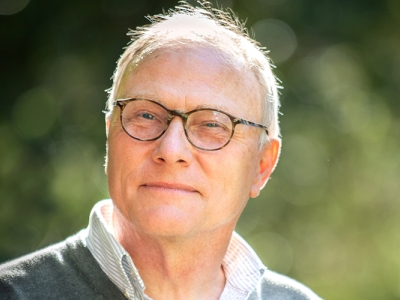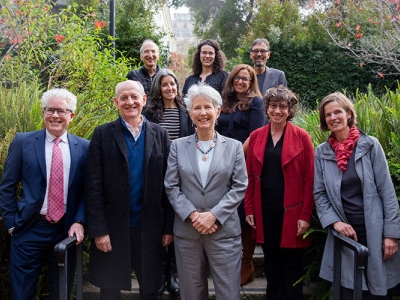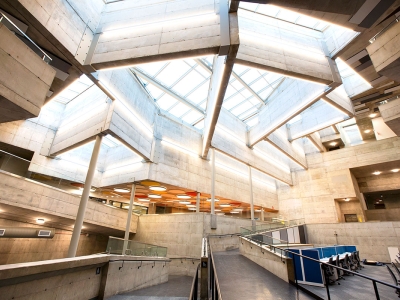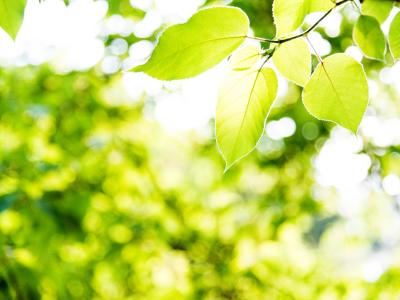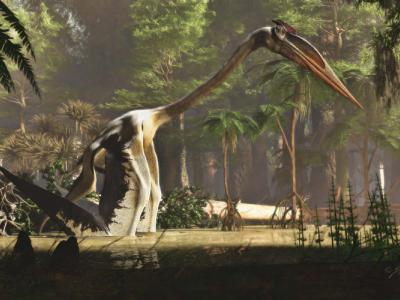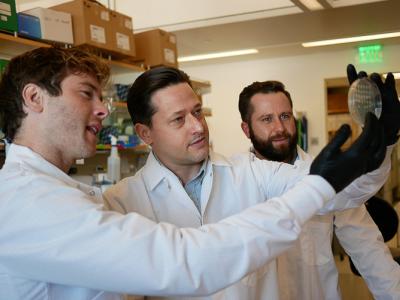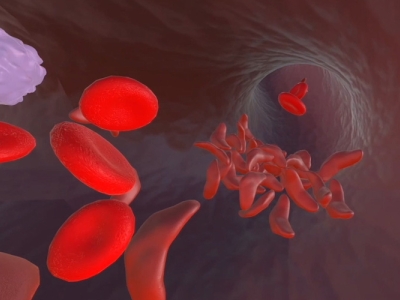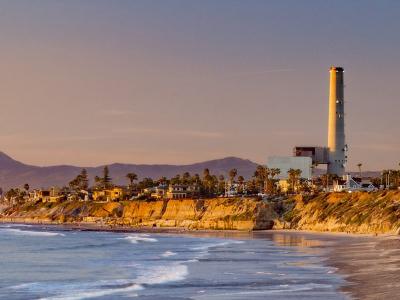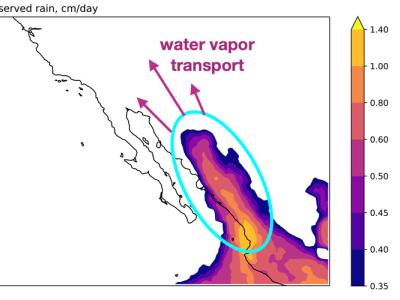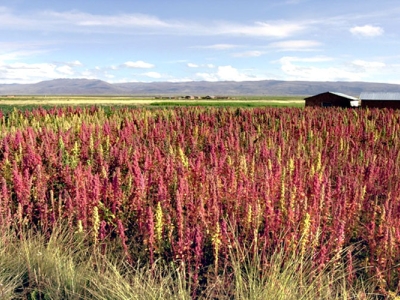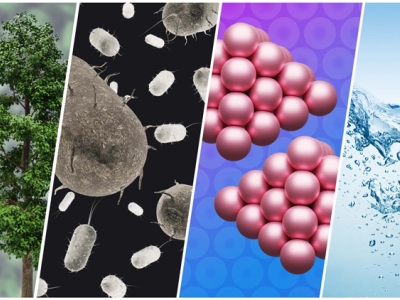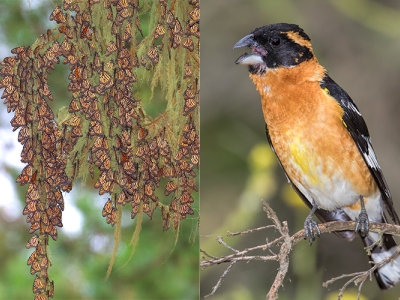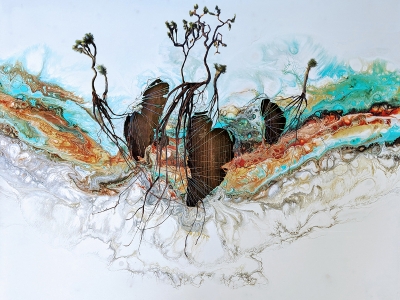UC Berkeley economist David Card received his 2021 Nobel Prize in a ceremony Wednesday and used the august occasion to encourage others in his field to embrace innovative research design that engages real-world human issues.
Research News
Learn more about UC Berkeley's researchers and innovators.
Showing 865 - 880 of 3459 Results
Chancellor's Professor Rucker C. Johnson has won the 2022 Grawemeyer Award in Education for his work on school integration.
UC Berkeley announced that the campus will be home to a new Kavli Center for Ethics, Science, and the Public, which, alongside a second center at the University of Cambridge in the United Kingdom, will connect scientists, ethicists, social scientists, science communicators and the public in necessary and intentional discussions about the potential impacts of scientific discoveries.
After two years of construction, the Bakar BioEnginuity Hub (BBH) is scheduled to open in February 2022. The world-class facility pairs the Bakar Labs incubator with fellowships and programming for Berkeley students and researchers, equipping current and aspiring entrepreneurs in the STEM world with labs, offices, equipment and shared community spaces that aim to encourage collaboration.
In a new CSHE research paper College Major Restrictions and Student Stratification(link is external), CSHE Research Associate Zachary Bleemer and Aashish Mehta show that underrepresented minority (URM) college students have been steadily earning degrees in relatively less-lucrative fields of study since the mid-1990s. Their paper reveals that this widening gap is principally explained by rising stratification at public research universities, many of which increasingly enforce GPA restriction policies that prohibit students with poor introductory grades from declaring popular majors.
New research from Berkeley Lab and UC Berkeley shows that plants are photosynthesizing more in response to more carbon dioxide in the atmosphere.
Look around any wetland today and you’re likely to see 3-foot-tall egrets or 4-foot-tall herons wading in the shallows in stealthy search of fish, insects or crustaceans.
But 70 million years ago, along the Rio Grande River in Texas, a more impressive and scarier creature stalked the marshes: the 12-foot-tall pterosaur known as Quetzalcoatlus. With a 37- to 40-foot wingspan, it was the largest flying animal that ever lived on Earth.
To date, CRISPR enzymes have been used to edit the genomes of one type of cell at a time: They cut, delete or add genes to a specific kind of cell within a tissue or organ, for example, or to one kind of microbe growing in a test tube.
Now, the University of California, Berkeley, group that invented the CRISPR-Cas9 genome editing technology nearly 10 years ago has found a way to add or modify genes within a community of many different species simultaneously, opening the door to what could be called “community editing.”
If you can’t stop saying or doing things that you later regret, here’s a diagnostic test for you: UC Berkeley researchers have pioneered a way to better determine when acting on one’s worst impulses verges on pathological.
A small clinical trial of a CRISPR cure for sickle cell disease, approved earlier this year by the U.S. Food and Drug Administration, has received $17 million to enroll about nine patients, the first of which may be selected before the end of the year.
The funds — $8.4 million from the California Institute for Regenerative Medicine (CIRM) and $8.6 million from the National Heart, Lung, and Blood Institute (NHLBI) — were awarded to UCSF Benioff Children’s Hospital Oakland, which will coordinate the four-year clinical study in collaboration with colleagues at the University of California, Berkeley, and UCLA.
In addition to the threat to residential neighborhoods, new research from UC Berkeley School of Public Health and UCLA Fielding School of Public Health suggests sea level rise will expose over 400 industrial facilities and contaminated sites in California, including power plants, refineries, and hazardous waste sites, to increased risk of flooding. Increased flooding can come with risks of contamination releases into nearby communities.
The months-long rainy season, or monsoon, that drenches northwestern Mexico each summer, reaching into Arizona and New Mexico and often as far north as Colorado and Northern California, is unlike any monsoon in the world, according to a new analysis by an earth scientist from the University of California, Berkeley.
What if Indigenous diets could save our politically and ecologically strained planet? UC Berkeley archaeologists reconstructed the diets of ancient Andeans living around Lake Titicaca, which straddles Bolivia and Peru 12,500 feet above sea level. They found that quinoa, potatoes and llama meat helped fuel the Tiwanaku civilization through 2,500 years of political and climate upheaval.
A team of chemists from the University of California, Berkeley, and the University of Minnesota has now engineered microbes to make hydrocarbon chains that can be deoxygenated more easily and using less energy — basically just the sugar glucose that the bacteria eat, plus a little heat.
In a study appearing this week in the journal Current Biology, researchers at the University of California, Berkeley, and UC Riverside report monarch-like genetic mutations in the genomes of four organisms that are known to eat monarchs: the black-headed grosbeak, a migratory bird that snacks on the butterflies at their overwintering home in Mexico; the eastern deer mouse, a close relative of the Mexican black-eared deer mouse that feeds on butterflies that fall to the ground; a tiny wasp that parasitizes monarch eggs; and a nematode that parasitizes insect larvae that feed on milkweed.
Berkeley News spoke with Harrower, now a first-year master’s student in the Department of Art Practice, about the power of art and science to spur social change and why she started a dating site for Joshua trees.

